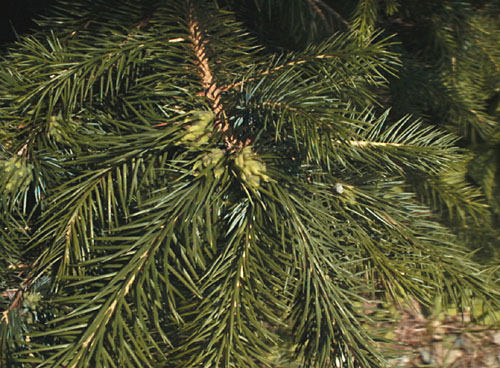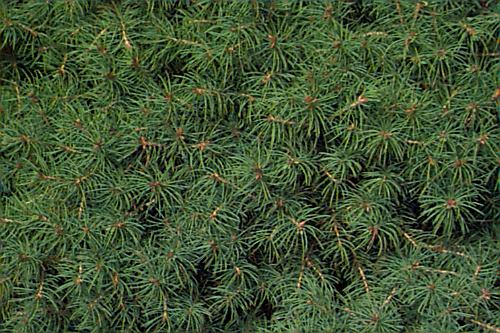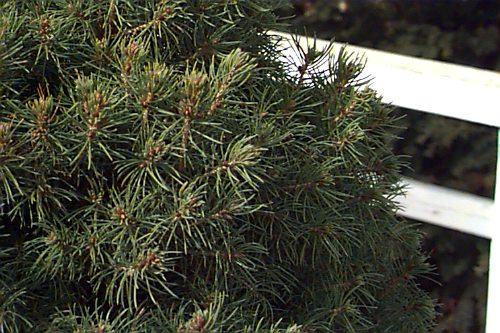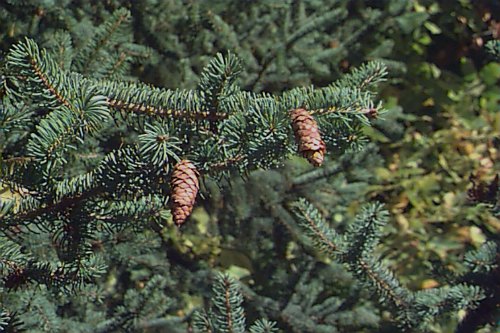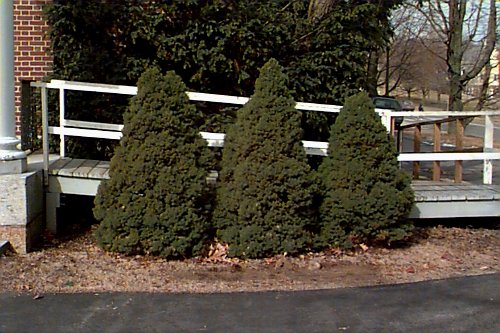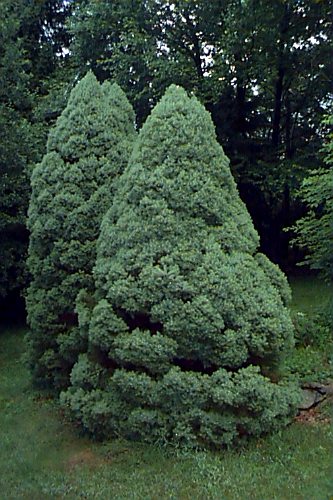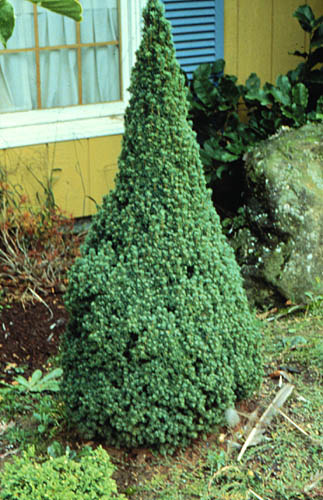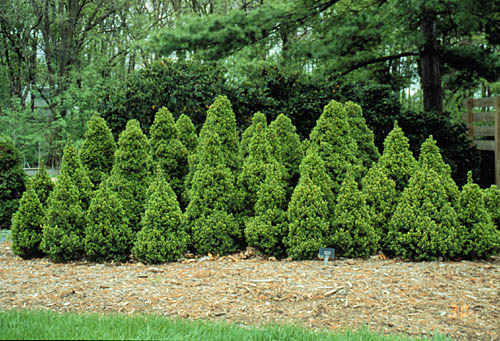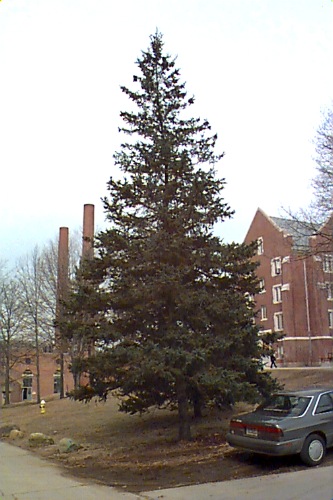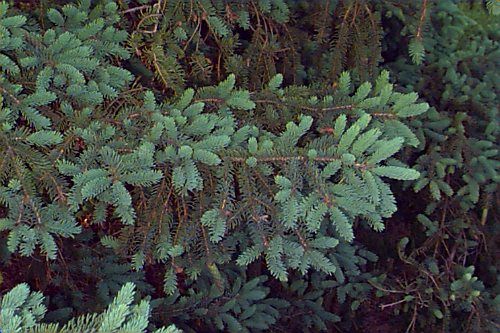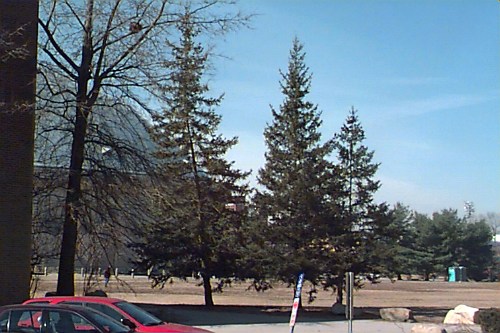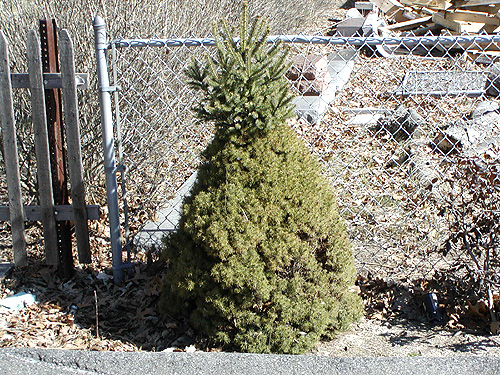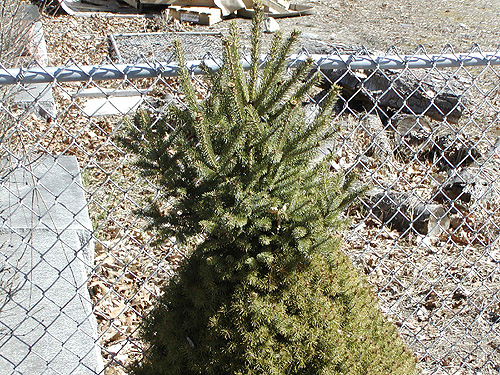Picea glauca
White Spruce
Pinaceae
ExpandHabitat
- native to northwestern North American
- zone 2
Habit and Form
- evergreen tree
- narrow conical form
- branches held horizontally
- 40' to 60' tall and 10' to 20' wide
- medium growth rate
- medium texture
- dense when young, becoming more loose and open with age
Summer Foliage
- needles that persist for 3 to 4 years
- needles are crowned on upper-side of branch
- needles are stiff and pointed, approximately 0.5" to 0.75' long
- needles are quadrangular in cross section
- needles are pointed
- 2 to 5 stomatal bands on both sides of needles
- glaucous, medium green in color
- crushed needles have a smell often described as "skunky" or somewhat like cat urine
Autumn Foliage
- no fall color, evergreen
Flowers
- monoecious
- not ornamentally significant
Fruit
- cones found towards the ends of branches
- cones are 1" to 2.5' long
- cone scales are thin rounded and have smooth margins
- light green color turning to a light brown at maturity
Bark
- young stems are glaucous and dark yellowish brown or gray in color
- older bark is light brown, flaking off, exposing a silvery color
Culture
- large trees transplant easily
- best in well-drained, sandy soils
- prefers acidic soils
- prefers cooler climates
- full sun
Landscape Use
- specimen
- mass plantings
- hedge
- windbreak
- screen
- often used as a Christmas tree
- useful along the seashore due to salt tolerance
Liabilities
- trees infested with eastern spruce gall adelgids are very unattractive
- susceptible to root rots, spruce bagworm, and red spiders
- cultivars such as 'Conica' (and related forms) may "revert" to normal growth
Specific to P. g. 'Conica' and related forms:
ID Features
- evergreen conical tree
- small cylindrical cones with rounded smooth margin scales
- adelgid galls
- needles leave petiole on stem when pulled off
- short, stiff, pointed needles
- branches held horizontally
- distinct "skunky" odor from crushed needles
Propagation
- by seed
- cultivars by grafting or cuttings
Cultivars/Varieties
'Conica' - Commonly called the "Dwarf Alberta Spruce". Perhaps the most common dwarf conifer, this overused plant is a staple at garden centers. It is a broad plant with a conical shape and small, light green needles that radiate around the stem. It appears dense and "soft" from a distance. Though very slow growing, it does eventually reach 12' tall and often outgrows its space under windows and along walkways. The cultivar does not produce any cones. It has a very formal appearance that can be difficult to intergrate into most landscapes. It also will occasionally revert back to "normal" growth in isolated parts of the plant.
Specific liability:
var. densata (also called 'Densata') - Commonly called the "Black Hills Spruce", trees of this type are slower growing than the species and have denser, darker green foliage. They reach 40' tall and may be preferable to the species.
'Coerulea' - A sport of P. g. var. densata, this plant bears short needles with a good gray-blue color. It is a narrow-growing tree.
'Echiniformis' - A low, bun-shaped plant, this slow-growing selection has blue-green needles and is suited to rock gardens and troughs.
'Jean's Dilly' (Jean's Dilly™) - Similar to 'Conica', but considered superior for its slower-growth rate and its shorter needles that emerge with an unusual twist.
'Pendula' - An old cultivar, this weeping plant has stiff branches that hang down. They are covered with grey-green needles.
'Pixie' - This cultivar is essentially a more compact and dense form of 'Conica'.
'Rainbow's End' (Rainbow's End™) - Similar to 'Conica', but the growth flush in early summer emerges creamy yellow to contrast with the light green older growth. The overall effect is variegated, though the colored growth matures to green. This plant makes an interesting accent in the landscape.
